Cannabis Curing |
Cannabis Curing Process
Cannabis Curing is a crucial step in the cultivation process that involves the proper drying and aging of harvested cannabis flowers. While often overlooked, curing plays a fundamental role in enhancing the overall quality, flavor, and potency of cannabis. This article delves into the importance of Cannabis Curing, exploring its historical significance, the science behind the process, and providing a step-by-step guide for achieving optimal results. Additionally, we will discuss common mistakes to avoid, best practices for storing cured cannabis, and even explore different curing techniques and methods. By understanding the art and science of Cannabis Curing, enthusiasts and cultivators can unlock the full potential of their harvest and enjoy an elevated cannabis experience. |
Learning the Cannabis Curing Process
What is Cannabis Curing?
So you've grown your own stash of cannabis, and now you're wondering what to do next. Well, my friend, it's time to cure it! Cannabis Curing is the process of drying and aging the buds after they have been harvested. This crucial step helps to enhance the flavor, aroma, and overall quality of the final product. It's like giving your buds a spa treatment before they hit the pipe.
|
If you're a cannabis enthusiast, you know that aroma and flavor play a huge role in your smoking experience.
We all want our cannabis to pack a punch, right?
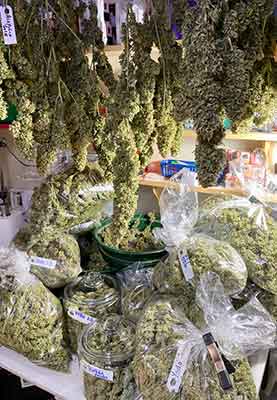
|
Benefits of Cannabis Curing
Enhanced Flavor and Aroma
Properly cured buds have a more pronounced and complex flavor profile. It's like upgrading from a plain old cheeseburger to a gourmet burger with all the mouthwatering toppings. So, if you want your buds to taste as good as they look, curing is key.
Improved Potency and Effectiveness
Well, curing can help with that too. During the curing process, certain chemical changes take place within the buds, which can lead to an increase in THC levels. This means a more potent and effective high for you. It's like getting a turbo boost for your buzz.
Reduction of Harshness
Nobody likes a harsh smoke that makes you cough like you're auditioning for a role in a Shakespearean tragedy. Luckily, curing can help with that too. As the buds are cured, harsh compounds, such as chlorophyll, break down, resulting in a smoother and less irritating smoke. So, say goodbye to the coughing fits and hello to a smooth and enjoyable toke. |
Science behind Cannabis Curing
What Happens During the Curing Process?
Let's get a little scientific here. During the curing process, the moisture within the buds slowly evaporates, which helps to preserve the cannabinoids and terpenes. This gradual drying allows for the chemical reactions within the buds to occur, leading to a more desirable end product. It's like the buds are having their own little chemistry party.
Chemical Reactions and Enzyme Activity
Now, don't worry, we won't dive too deep into the world of chemistry. But it's important to know that curing allows for certain enzymes to break down chlorophyll, sugars, and other compounds, resulting in smoother smoke and enhanced flavor. It's like giving your buds a spa treatment for their taste buds.
Step-by-Step Guide to Cannabis Curing
Harvesting Cannabis at the Right Time
Timing is everything when it comes to harvesting your cannabis. Make sure to wait until the trichomes (those tiny, frosty crystals) have reached their desired level of ripeness. This will ensure that your buds are at their prime for the curing process. It's like picking the ripest tomato from your garden for that perfect caprese salad.
Trim and Prepare the Buds
Once you've harvested your buds, it's time to give them a little TLC. Trim off any excess leaves and hang the buds upside down in a cool, dark, and well-ventilated space. This will help them dry slowly and evenly. It's like putting your buds in a cozy little hammock to relax and unwind.
Choosing the Right Containers for Curing
When it comes to curing, not all containers are created equal. Opt for glass jars with airtight seals. This will help maintain a consistent temperature and humidity level, allowing the buds to cure properly. It's like giving your buds their own stylish and functional condo.
Controlling Temperature and Humidity
Temperature and humidity are two key factors in the curing process. Aim for a temperature of around 60-70°F (15-21°C) and a humidity level of 50-60%. This will help prevent mold growth and ensure a smooth and gradual curing process. It's like creating the perfect spa environment for your buds.
Burping: Importance and Process
Yes, you read that right, burping. Just like you would burp a baby to release built-up gas, you need to burp your curing jars too. Every day, open the jars for a few minutes to let any excess moisture escape. This will prevent the buds from becoming damp and moldy. It's like giving your buds a breath of fresh air.
So there you have it, a beginner's guide to Cannabis Curing. Follow these steps, and you'll be well on your way to enjoying some top-notch buds with enhanced flavor, potency, and smoothness. Happy curing, my fellow cannabis enthusiasts! Remember, it's all about treating your buds with love and care, just like you would treat yourself to a spa day.
Factors Affecting the Curing Process
Cannabis Curing is a delicate process that requires attention to various factors. From environmental conditions to bud density, here are some key factors that can affect the quality of your cured cannabis.
Environmental Factors: Temperature and Humidity
Just like Goldilocks and her porridge, the perfect temperature and humidity are essential for Cannabis Curing. If it's too hot and dry, the buds can dry out too quickly, leading to a harsh smoke. On the flip side, if it's too cold and humid, you risk mold or mildew growth. Finding the sweet spot of around 60-65% humidity and a temperature of 60-70°F will help preserve your precious buds.
Bud Density and Size
The density and size of your buds can also impact the curing process. Denser buds tend to take longer to cure as they have more moisture trapped inside. Large buds might require extra attention to ensure even drying and prevent mold formation. So, when it comes to Cannabis Curing, remember that size and density do matter.
The Importance of Proper Air Circulation
Well, it's not just humans who need fresh air—your cannabis buds do too! Proper air circulation during the curing process is crucial for reducing the risk of mold and mildew. Make sure your buds are not too crowded together and that they have enough space to breathe. You can give them a gentle stir or rotate them occasionally to promote even drying. Remember, good airflow equals happy buds.
Common Mistakes to Avoid in Cannabis Curing
While curing is a relatively simple process, it's easy to make mistakes along the way. Here are some common blunders to steer clear of when you're curing your cannabis.
Rushing the Drying Stage
We get it—you're excited to try your flavorful creation. But rushing the drying stage can lead to undesirable results. When drying cannabis, patience is a virtue. Letting your buds dry slowly allows for a smoother smoke and richer flavors. So, resist the urge to speed things up with excessive heat or airflow, and let nature work its magic.
Over or Under-Curing
Ah, the delicate balance of curing. Over-curing your cannabis can result in a harsh smoke while under-curing can leave you with a damp and unpleasant experience. Keep a close eye on the drying process and monitor the moisture levels regularly. Touching the buds and using a hygrometer can be helpful tools in assessing when your cannabis is perfectly cured.
Storing in Inadequate Containers
You've put all this effort into growing and curing your cannabis, so don't skimp on proper storage containers. Storing your cured buds in inadequate containers can expose them to oxygen and light, which can degrade their quality over time. Invest in airtight glass jars or containers specially designed for cannabis storage. Your buds will thank you for it. |
Choosing the Right Storage Containers
As mentioned earlier, airtight glass jars or containers with good seals are ideal for cannabis storage. They provide a dark and stable environment, protecting your buds from light and humidity fluctuations. Plus, they also help contain those mouth-watering aromas.
Maintaining Optimal Storage Conditions
To keep your cured cannabis in peak condition, store it in a cool, dark place. Avoid exposure to extreme temperatures, as heat can degrade the cannabinoids and terpenes. Aim for a storage temperature of around 60-70°F for optimal preservation.
Avoiding Light and Excessive Oxygen Exposure
Light and oxygen are your cannabis's enemies when it comes to storage. UV rays can degrade cannabinoids, while oxygen exposure can lead to cannabinoid oxidation. So, keep your stored cannabis away from direct light and avoid unnecessary opening of containers. Your stash will thank you with every flavorful puff.
|
Best Practices for Storing Cured Cannabis
Now that your cannabis is properly cured, it's time to ensure it stays fresh and potent. Here are some best practices for storing your cured cannabis.
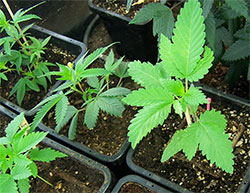
|
Exploring Different Curing Techniques and Methods
While there are traditional curing methods, some creative souls have come up with rapid curing techniques. Let's take a quick look at these different approaches.
Traditional Curing Methods
The traditional method of curing involves drying your cannabis slowly over the course of a few weeks in a controlled environment. This allows for gradual break down of chlorophyll and development of desirable flavors and aromas. It's the tried-and-true way to achieve a smooth smoking experience.
Rapid Curing Techniques
For those who are more impatient (we won't judge), rapid curing techniques can be an option. These methods use heat or dehydration to speed up the drying process. While they can get your buds ready to enjoy sooner, they may sacrifice some of the subtler flavors and aromas that come from a slower curing process. Choose wisely, my fellow cannabis enthusiasts.In conclusion, the curing process is a vital aspect of cannabis cultivation that should not be overlooked. By taking the time to properly cure your harvested cannabis flowers, you can unlock a myriad of benefits, including enhanced flavor and aroma, improved potency, and a smoother smoking experience. By following the step-by-step guide, avoiding common mistakes, and implementing best practices for storage, you can ensure that your cured cannabis maintains its quality over time. So, embrace the art and science of Cannabis Curing, and elevate your cannabis experience to new heights. Happy curing!
FAQ
Why is Cannabis Curing necessary?
Cannabis Curing is necessary to improve the overall quality and experience of the harvested cannabis flowers. It allows for the breakdown of chlorophyll and other compounds, resulting in a smoother and more flavorful smoke. Additionally, curing helps to preserve the potency of the cannabinoids, maximizing the desired effects.
How long does Cannabis Curing take?
The duration of the Cannabis Curing process can vary depending on several factors, including the desired outcome, the strain of cannabis, and the environmental conditions. Typically, Cannabis Curing can take anywhere from a few weeks to several months. It is important to monitor the process regularly and adjust as needed to achieve the desired level of curing.
Can I cure cannabis without specialized equipment?
Yes, you can cure cannabis without specialized equipment. While certain tools such as humidity packs and hygrometers can help monitor and maintain optimal conditions, you can achieve successful curing using readily available materials. Mason jars or airtight containers, along with proper temperature and humidity control, are often sufficient for effective Cannabis Curing.
Can I cure cannabis too much?
Yes, it is possible to over-cure cannabis. Over-curing can result in a loss of terpenes, diminished flavor and aroma, and a harsh smoking experience. It is crucial to monitor the curing process carefully and ensure that the cannabis is not left for an extended period, beyond the desired level of curing. Regular sensory evaluation and close attention to the moisture content of the buds can help prevent over-curing. |
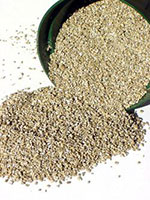
Vermiculite |
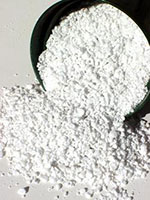
Perlite |
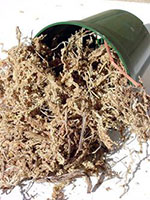
Sphagnum Moss |
| |
|
|






